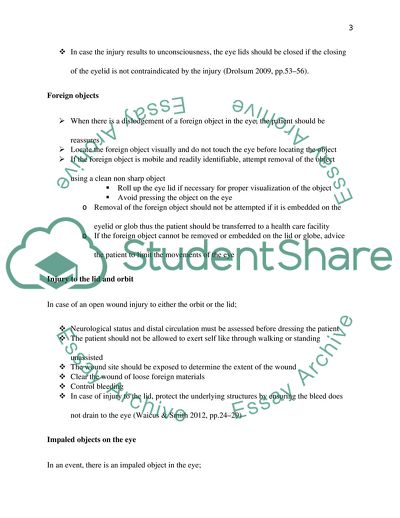Clinical assessment for Paramedics Essay Example | Topics and Well Written Essays - 500 words. https://studentshare.org/medical-science/1875159-paramedic-guidelines-for-eye-management
Clinical Assessment for Paramedics Essay Example | Topics and Well Written Essays - 500 Words. https://studentshare.org/medical-science/1875159-paramedic-guidelines-for-eye-management.


